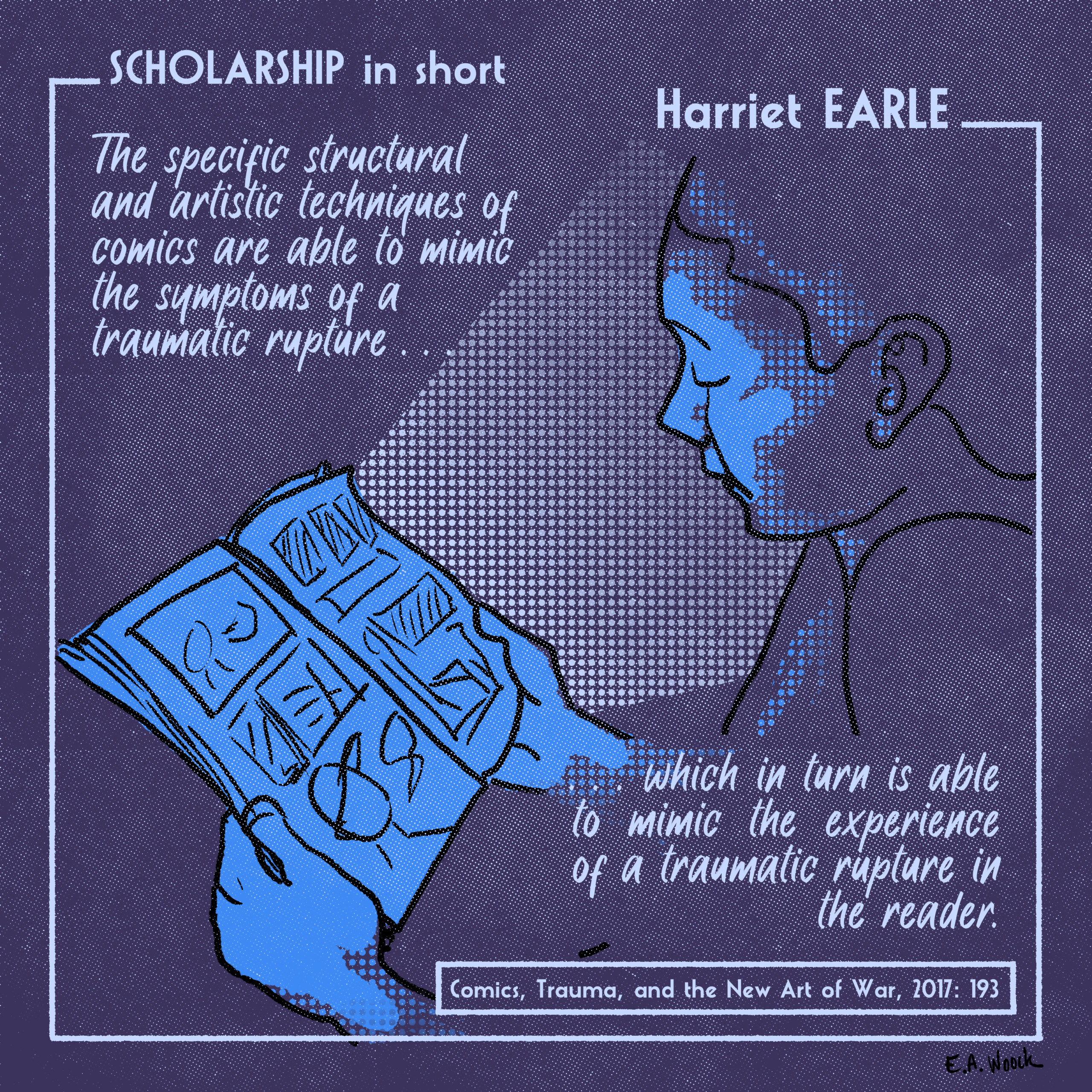
About the scholar
Dr Harriet Earle is a senior lecturer in English at Sheffield Hallam University and a Research Fellow at the Centre for War, Atrocity, and Genocide at the University of Nipissing. She is the author of Comics, Trauma, and the New Art of War and Comics: An Introduction.
About the book
Dr. Earle’s book looks at comics which are explicitly about historical war conflicts, and is among the first full-length studies of conflict and trauma in comics using theoretical frameworks from trauma studies, comics studies, and literary theory to analyze the ways in which American comics create trauma narratives. The study works with autobiographical texts, “life writing” or “memoir,” mainstream series, and fictional one-shots because each one adds something to the conversation of how comics can represent conflict—and specifically conflict trauma—and why these representations are important in the wider scheme of conflict narrative and representational strategy. This draws from comics studies and a pluralistic model of trauma theory.
Comics, Trauma, and the New Art of War looks at formal aspects of creating comics which depict trauma, and starts with three texts: The Iliad, Beowulf, and Le Morte d’Arthur. Turning to contemporary comics, Chapter 3 looks at the depiction of traumatic dreams in The ‘Nam, Maus, American Widow, among others, and then dedicates a chapter to comics using the framing of retelling family stories. Dr. Earle considers questions of form and genre, and the final section of the book considers the representation of female characters and the issue of women in the comics industry.
This book argues that “the representation of a traumatic event in any artistic medium relies on the artists’ ability to recreate the experience of the event (not the event itself) – that is the trauma the individual experienced and continues to experience. The specific structural and artistic techniques of comics are able to mimic the symptoms of a traumatic rupture in the formal presentation of the narrative, which in turn is able to mimic the experience of a traumatic rupture in the reader.”
